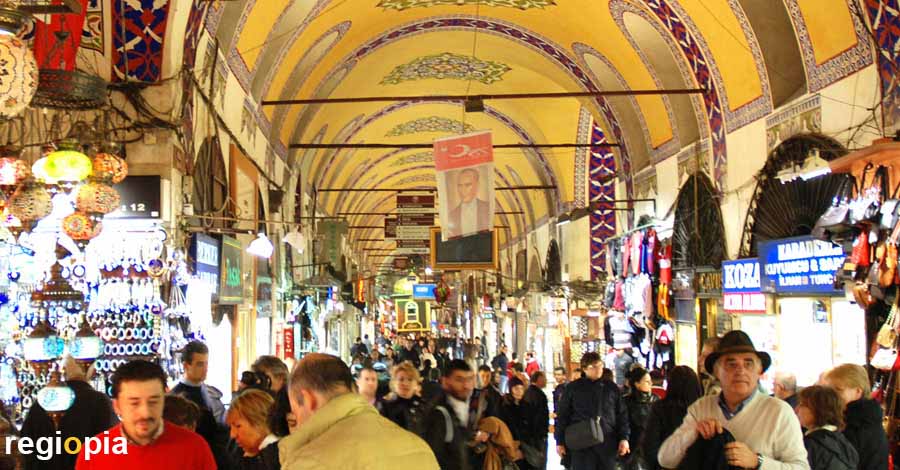
Grand Bazaar of Istanbul
The Kapali Carsi "Grand Bazaar" or "Covered Bazaar" was created by the growing together of old and new market halls in the past 500 years. The bazaar is one of the most famous tourist attractions of Istanbul. You can stroll for hours through the spacious halls and shop for carpets, lamps, jewelry and souvenirs. You should bargain when buying, but if you don't want to buy something, you shouldn't even start trading.
Haggle
Never call a price yourself, always let the dealer start. Then reduce the price by at least half. If the dealer scolds you are on the right track. Then you should leave the stand, now the dealer calls a significantly lower price. You go anyway and test another seller. As a tourist you have no idea what the things in the bazaar are actually worth, through several tests you get a feeling for the right price, which will still be significantly too high. The more valuable the object, the more time you should plan for trading.
The bazaar is huge, after the visit you need a refreshment. There are many restaurants and cafes around the Grand Bazaar.
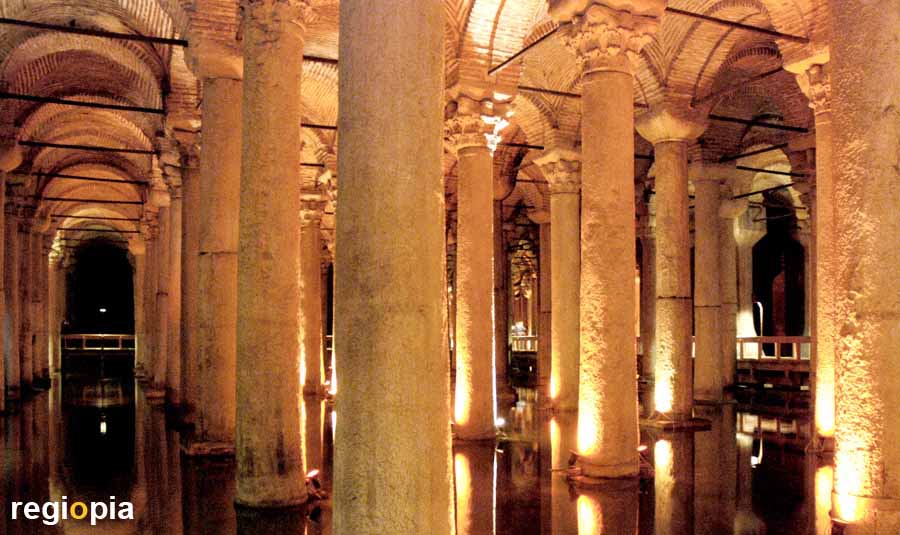
Sunken Palace
"The sunken palace" is also the name of the cistern that the Byzantine emperor Justinian had built in 565 to supply his palace with water. With 336 marble columns, each 9 m high, the Yerebatan Sarayi actually looks like an underground palace. The capitals are Corinthian and Doric. 80,000 cubic meters of water could be stored on a 140 m long and 70 m wide floor space. After the conquest of Byzantium by the Ottomans in 1453, the cistern served only briefly as water supply for the Topkapi Sarayi. The Ottomans built a new water supply and the "Sunken Palace" was forgotten. The Yerebatan Sarayi was rediscovered in the 16th century.
The entrance to Yerebatan Sarayi is next to the Hagia Sophia. A staircase leads to the large hall, where visitors can reach the ancient water reservoir via footbridges. The main attraction of the cistern are the two heads of the Medusa, which were used as the column base. It is not sure whether they come from another building or were made as protection for the "Sunken Palace". The head of Medusa was used as protection in Byzantium. The legend tells that the snake head can turn anyone into stone who looks at it. To prevent this from happening, the heads of the snakes were placed upside down. The "Sunken Palace" is one of the top attractions of Istanbul.
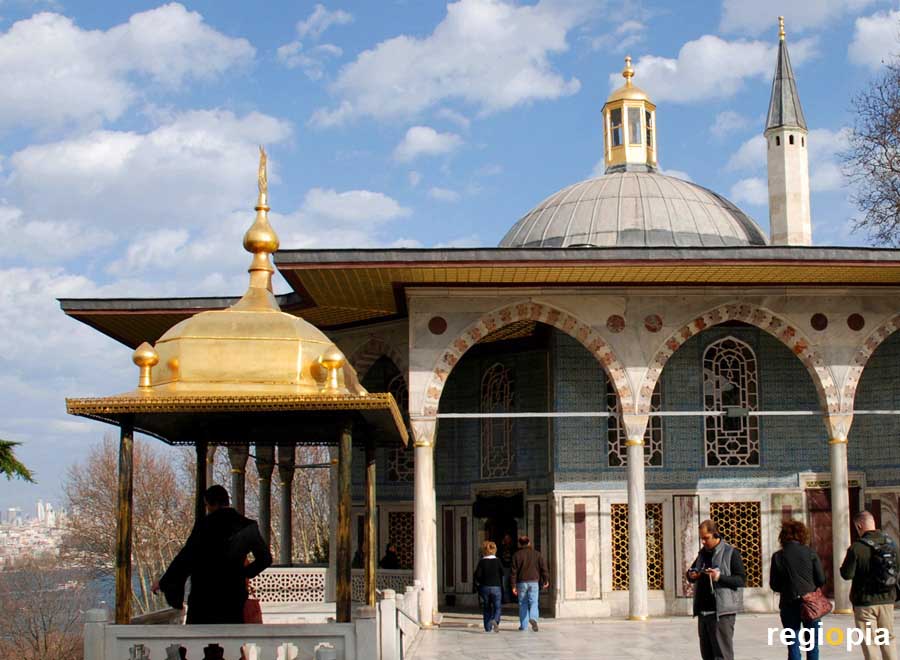
Topkapi Palace
The palace of Mehmed II was built in 1469. The location was chosen by strategic reasons. The Sultan could overlook the harbor and control the Bosphorus with his cannons. The Topkapi Palace is famous for it's luxurious harem and stunning splendor.
https://muze.gen.tr/muze-detay/topkapi
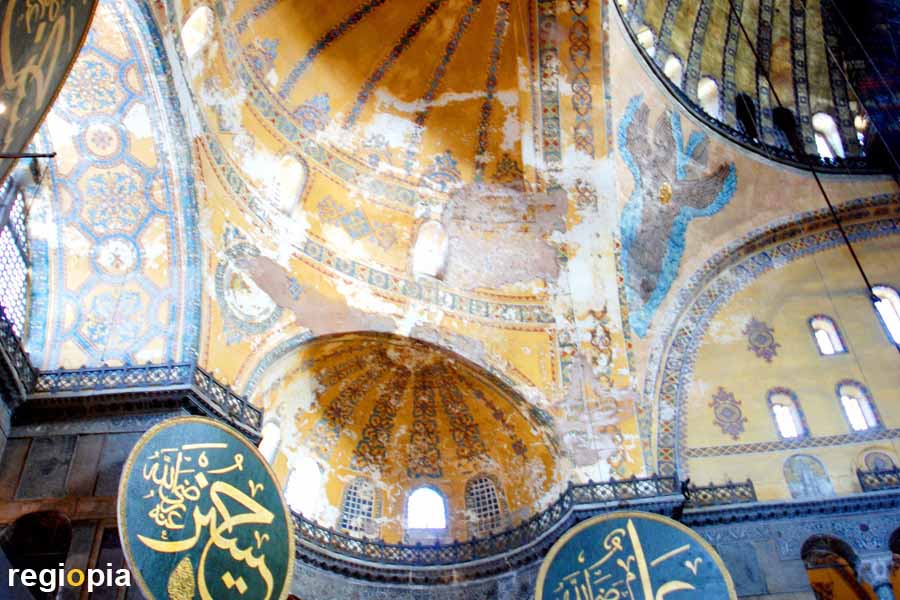
Hagia Sophia
The "Hagia Sophia" (Church of Holy Wisdom) was built by the roman Emperor Justinian, who ruled from 527 until his death in 565. For centuries the Hagia Sophia was the world's largest church. The dome has a diameter of 32 m. After the conquest of Constantinople by the Ottomans in 1453, the Hagia Sophia became the main mosque of Istanbul.
https://muze.gen.tr/muze-detay/ayasofya
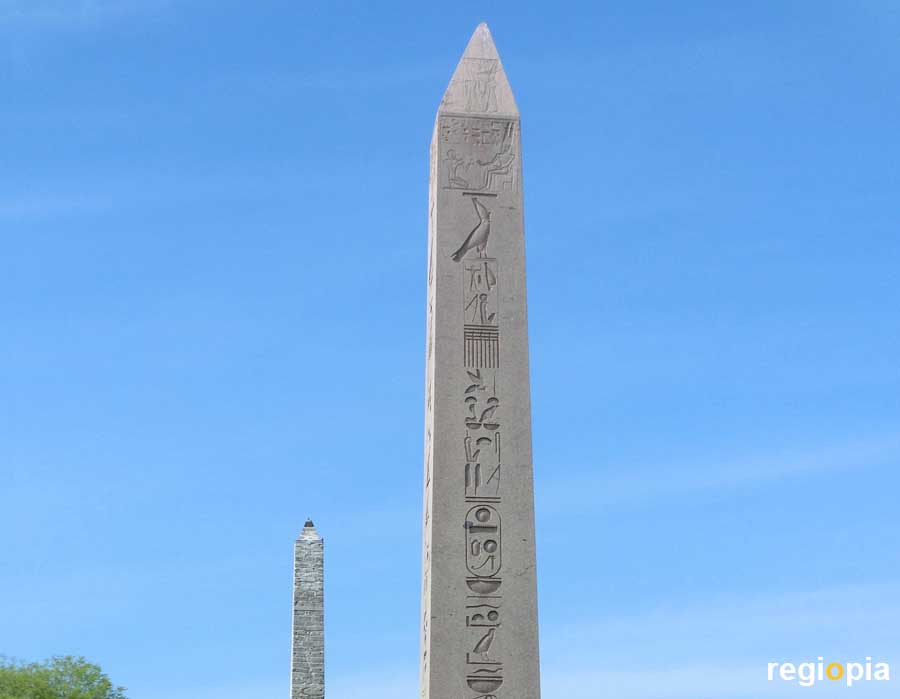
Obelisk
The Egyptian obelisk came to Constantinople in the 4th century under Emperor Theodosius (379-395). At that time there was the 429 m long Hippodrome at this place, in which chariot races were held with 100,000 spectators. On the square stands the Serpent Column, which was once in the Greek oracle town of Delphi and was brought by Constatine to his capital. Two of the three heads of the column have been lost. The remaining head is now in the Archaeological Museum of Istanbul next to Topkapi Sarayi.
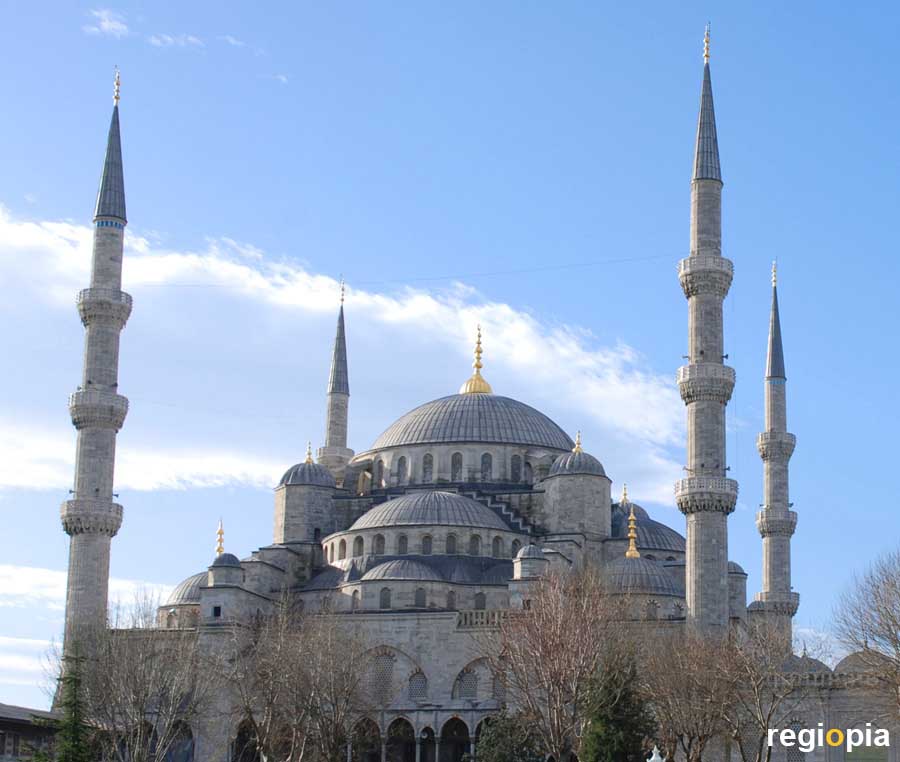
Sultan Ahmed Camii
Sultan Ahmed I had built this huge mosque in 1616. The building is also called "Blue Mosque" because from inside, the dome is covered by blue tiles. The six slender minarets dominate the skyline of Istanbul.
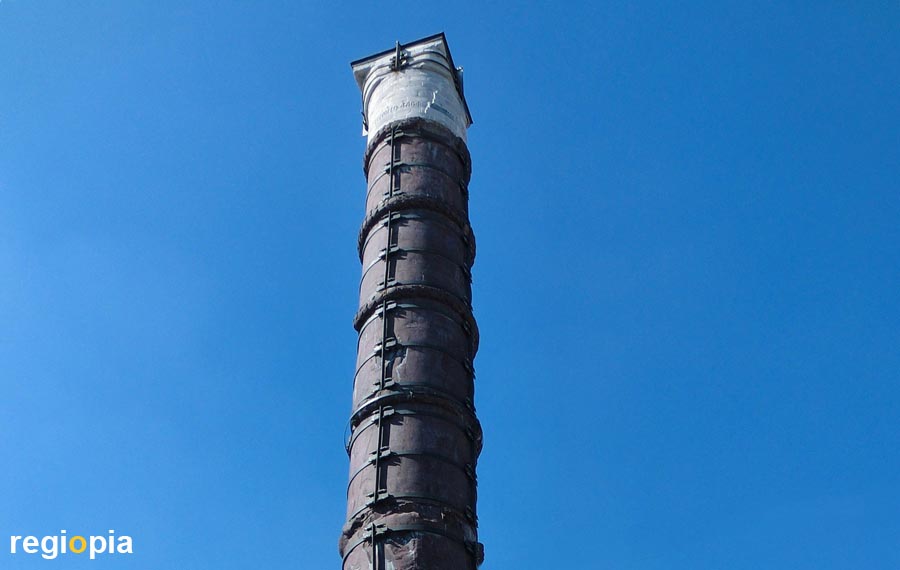
Pillar of Constantine
The 35-meter high Cemberlitas (pillar of Constantine) stood in the Roman Forum and served Apollo, the god of light, the arts, healing, spring and moral purity. It was built by Emperor Constantine, who ruled the Roman Empire from 306-337. Constantine saw himself as the god of the sun and the statue on the pillar was modeled after him. The forum was the center of the Roman city of Constantinople. The Apollo statue was destroyed in a storm in 1106.
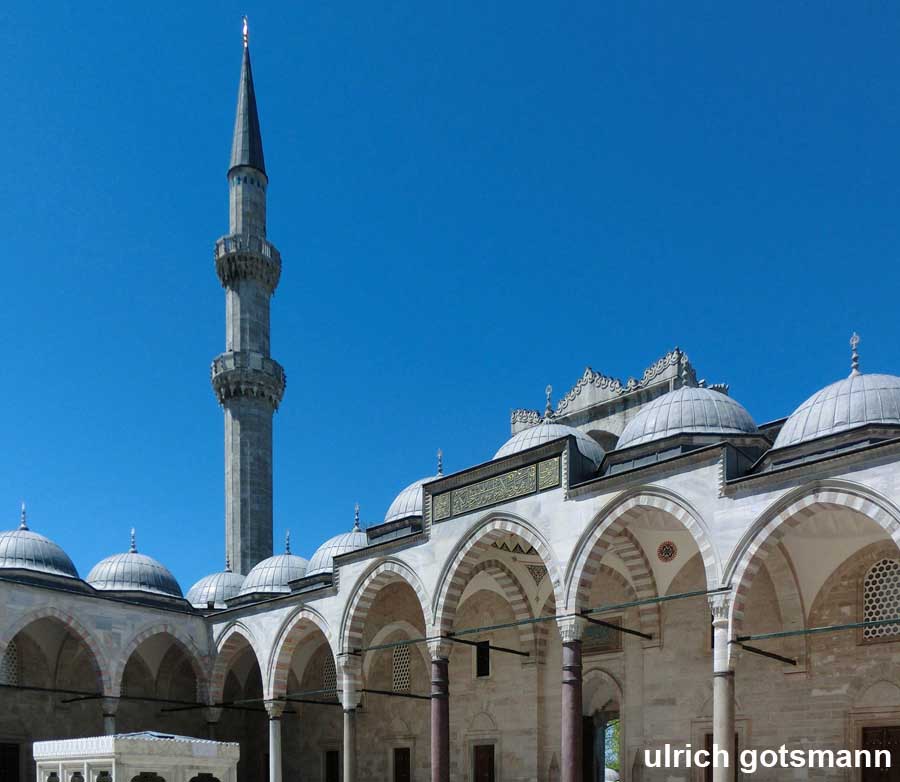
Süleymaniye Camii
Suleyman the Magnificent built this mosque in 1557. The mosque, with its numerous domes and light-filled rooms, is an architectural masterpiece of "Mimar Sinan", the most famous architects of the Ottomans, whose tomb is located here.
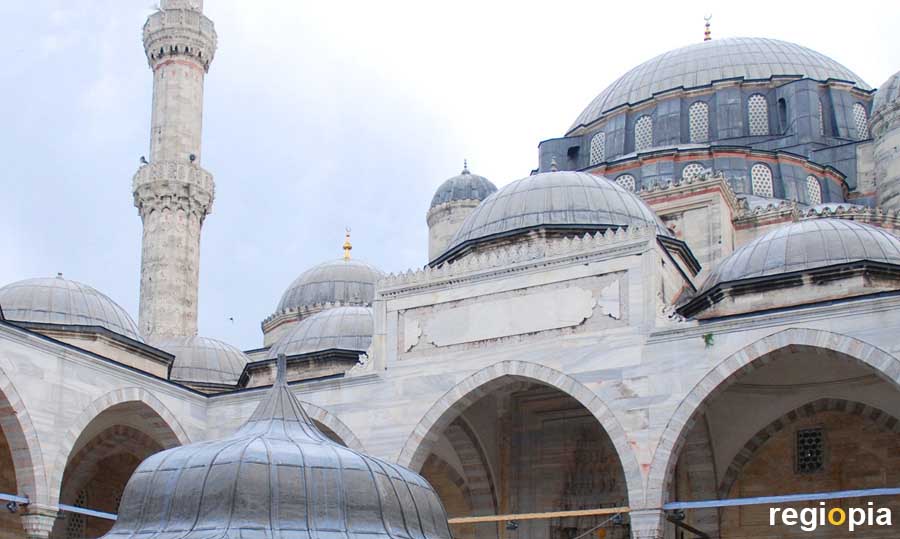
Princes Mosque
The Sehzade Camii (Princes Mosque) was built in 1543-1548 to commemorate the deceased son of Suleiman the Magnificent. It was the first mosque of the famous architect Sinan. Joseph Sinan was born as a Christian in 1491 and was forcibly converted to a Muslim as a boy. Under Suleiman I he became the court master builder and designed over 130 mosques in the Ottoman Empire. His most famous work is the Selimiye Mosque in Edirne.
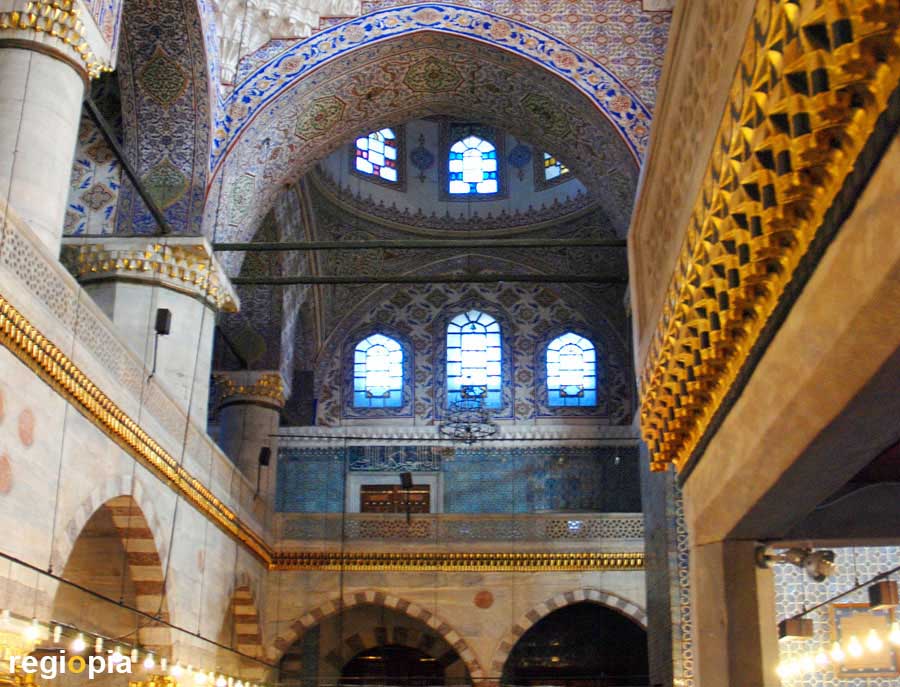
Yeni Camii
The construction of the Yeni Camii began in 1597 under Safiye, the mother of Mehmed III. Since Mehmed III died in 1603, the mosque was completed under Mehmed IV. The new mosque was inaugurated in 1663. The mosque includes a hospital, a madrasa and a public bath. The interior features blue-and-white Iznik faience from the Bursa region, inspired by Chinese porcelain. The magnificent Yeni Camii stands between the Galata Bridge and the Egyptian Bazaar.
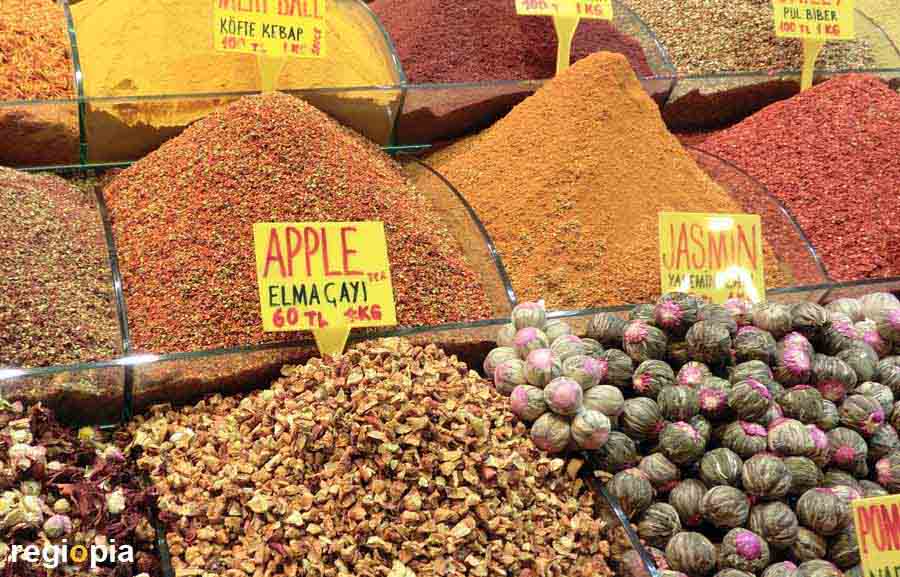
Misir Carsisi
The Misir Carsisi (Egyptian Bazaar) on the harbor next to Yeni Camii, has retained its oriental charm. There are large mountains of fragrant spices, traders offering Turkish delights and crowds of customers pusg through this magic historic setting.
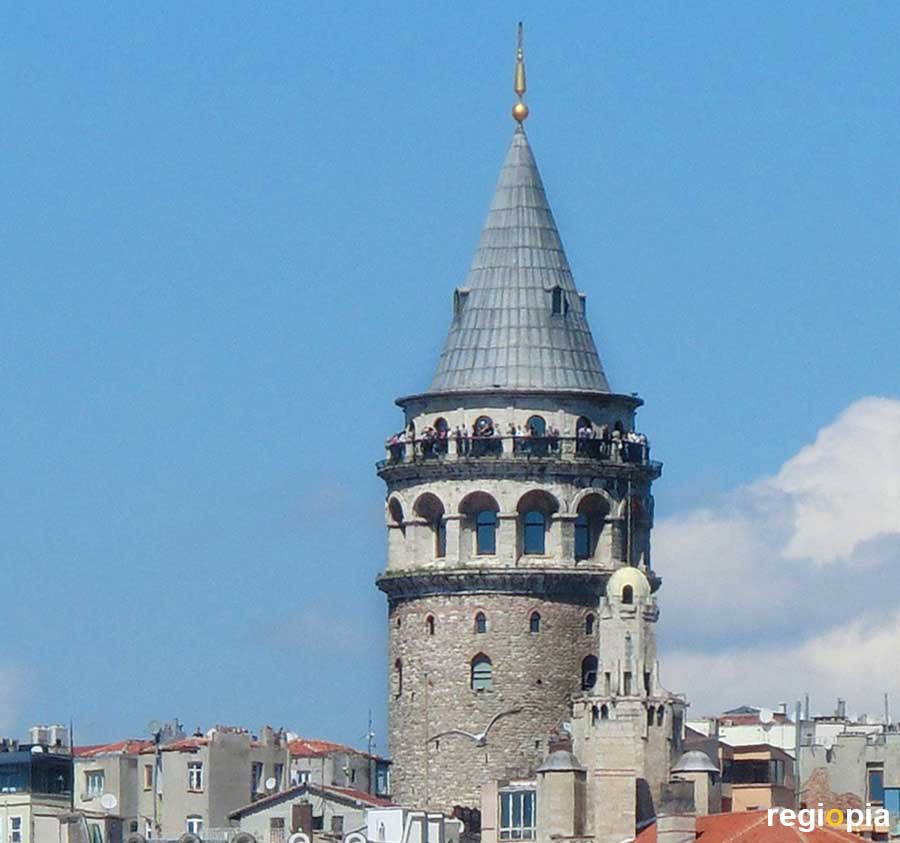
Galata Tower
The Galata Tower Galata Kulesi was built in 1349 as part of the town fortification of the Genoese traders who operated a trading post in Galata. The tower stands on a 48 m high hill and is 67 m high. From the viewing platform you have the most beautiful Istanbul panorama. The Galata Tower is therefore one of the top tourist attractions on the Bosphorus. The view on the Golden Horn is a highlight of every Istanbul tour.
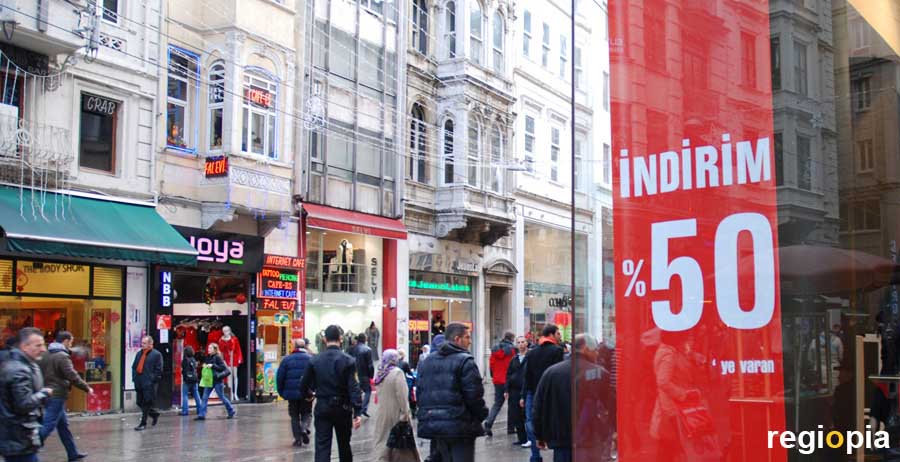
Istiklal Caddesi
The pedestrian zone in Beyoglu leads from Galata Tower to Taksim Square. On the lively shopping street is an old tram. Left and right of the street are shopping arcades, small markets, restaurants and cinemas.
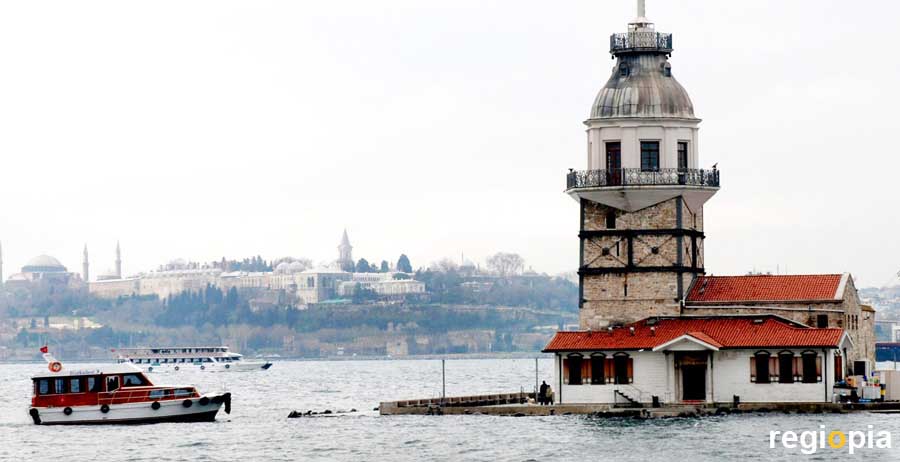
Kiz Kulesi
The Girl's Tower was built as a lighthouse in the 18th century. The legend tells the story of a girl who lived here, because it was prophesied that she would be poisoned. To escape her fate she lived on this small Island, but was bitten by a snake, that came to the island in a fruit basket.
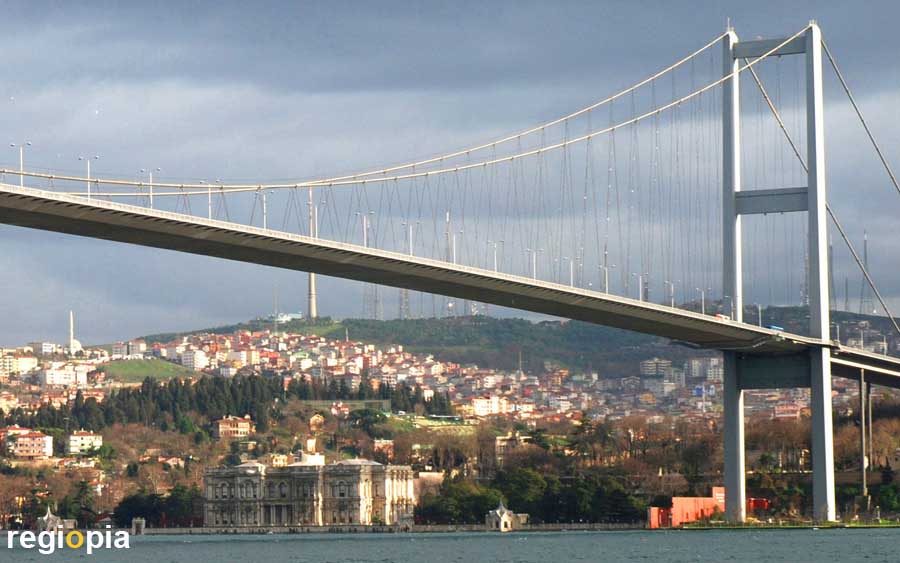
Bosporus Bridge
The London engineering firm Freeman Fox & Partner built the 1.560 m long bridge over the Bosphorus. The suspension bridge connecting Europe with Asia opened in 1973 and has since become a landmark of Istanbul.
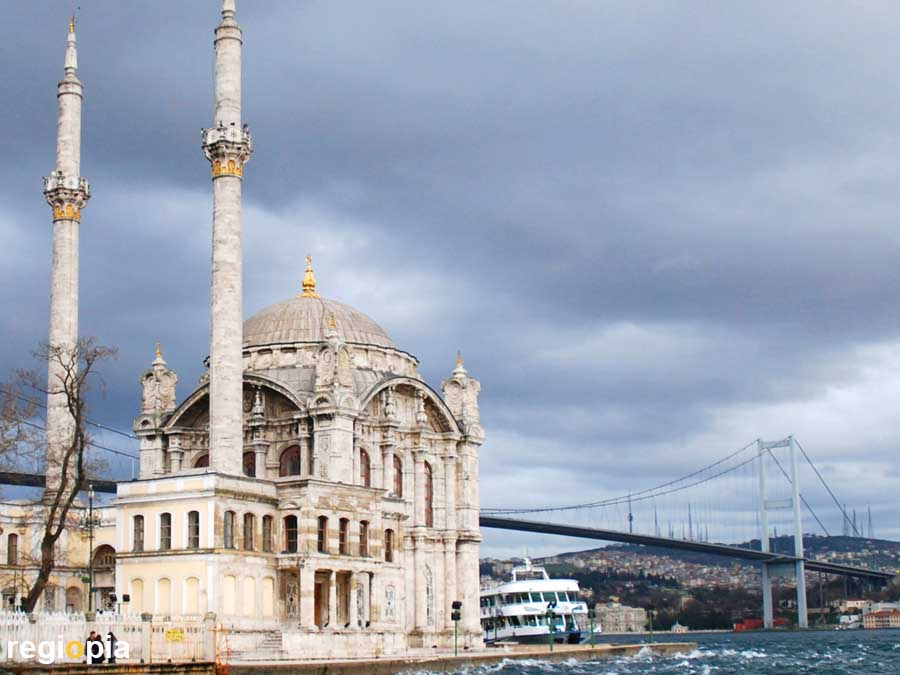
Ortaköy Camii
The neo-baroque Ortaköy Camii was built in 1856 by architect Balyan. Together with the Bosphorus Bridge in the background, it is one of the city's most popular photo opportunities. From the city center you can take the ferry directly to Ortaköy.
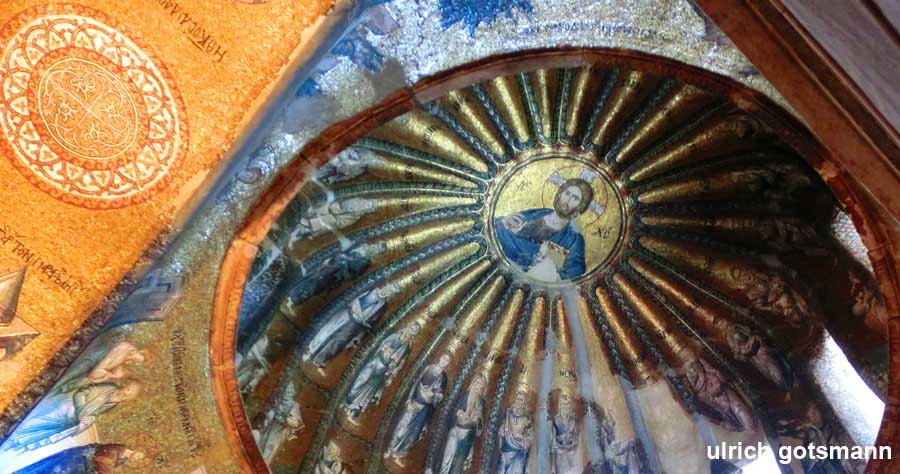
Chora Church
The Chora Church (Kariye Camii) was built in 1321 by Theodorus Metochites, a theologian and senior official of Emperor Andronikos II. The interior of the church is decorated with magnificent golden mosaics.
https://muze.gen.tr/muze-detay/kariye
Map Istanbul sights & attractions
ads
Travel Guide Istanbul
Welcome to Istanbul
Istanbul is the largest city in Turkey with around 15 million inhabitants. The regiopia travel guide introduces you to the most important sights and tourist attractions of the city on the Bosporus.
ads
ads


